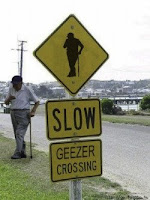 Where will the impetus for Fundamental Change in Virginia come from? One source is concern about climate change, and the resulting push to conserve energy. Another is the price of gasoline, which, though temporarily depressed, will shoot back up again as soon as the economy recovers. To those two, we can add a third: the age wave.
Where will the impetus for Fundamental Change in Virginia come from? One source is concern about climate change, and the resulting push to conserve energy. Another is the price of gasoline, which, though temporarily depressed, will shoot back up again as soon as the economy recovers. To those two, we can add a third: the age wave.
We all know our society is aging. While we can make intelligent guesses about energy prices and climate change, we can predict with near certainty that the inexorable advance of Baby Boomers into their 70s and 80s will swamp America’s existing institutions. Yet, as acutely aware as we are of the age wave’s ramifications wave for Social Security, Medicare and Medicaid, we have given little thought to its implications for transportation and land use.
It’s inevitable: As Boomers get older, their cognitive processes will decline, their reaction times will slow, and increasing numbers they will be unable to drive. Unless technology reaches the point where drivers can punch a destination into a dashboard, turn over the driving to a computer and lean back to enjoy the ride, Virginia will find itself with unprecedented numbers of old Boomers living in social isolation, unable to care for themselves.
At the same time, there will be dearth of caregivers. As my Boomer Project compadre Matt Thornhill observed in a recent column in the
Times-Dispatch, the front-line caregivers — spouses and children — are shrinking in numbers. More Baby Boomers than ever are foregoing marriage, and they’re having fewer children. (See his Thanksgiving-inspired piece, “
By 2028, Boomers Will Be Most Thankful for Friends.”)
Meanwhile, as my other Boomer Project compadre, John W. Martin, writes in a follow-up column, “
It takes a Village,” the G.I. and Silent generations were willing to be sequestered in “geezer ghettoes” like nursing homes and extended care facilities. But Boomers reject that model of aging. They want to “age in place” — to grow old in their own homes, remaining connected to family, friends and community.
In a survey that BP conducted earlier this year for the Older Dominion Partnership, 88 percent of Boomers responded that they want to live in their own home in their later years. For 70 percent, that holds true even if they become ill or disabled. If white-haired Boomers (or blue-haired, in the case of their wives) refuse to be warehoused in age-segregated communities, and they also have fewer family caregivers to look after them, what options do they have?
The only viable option is to stay independent as long as possible. Unfortunately, Virginia’s auto-centric human settlement patterns make oldsters dependent upon others for transportation, not independent.
At some point, Virginians will wake up to the reality that the Age Wave bearing down on us is incompatible with scattered, low-density and auto-dependent human settlement patterns. People who think about the Age Wave are advocating ideas such as “universal design,” adapting houses to the needs of the elderly and disabled, and “intergenerational living,” in which oldsters provide free living quarters in their big, drafty buildings to young people in exchange for their personal assistance.
Ultimately, though, John writes, the solution resides not in retrofitting houses with grab bars in bathrooms and monitoring devices but in retrofitting communities to enable the elderly to walk, take the bus or ride the subway when they are too old to drive. To remain independent longer, old people need to live in mixed-use communities where important services, from grocery stores to libraries, are within short walking distance, streestscapes are pedestrian friendly and transportation alternatives are abundant. John envisions more urban “village” like those in Arlington, which has labored for decades to emancipate its residents from automobile dependency.
The Age Wave is coming, and Virginia communities are beginning to plan for it. The Older Dominion Partnership is emerging as a vehicle for the collection of data and dissemination of best practices. Under the ODP umbrella, task forces are examining vital age-related issues from medical care to community readiness. No group has yet focused on transportation and urban design, but John’s column suggests that such a perspective may not be long in coming. Indeed, I will boldly (recklessly?) predict that Age Wave planning will soon join energy and environmental issues in the near future as an impetus for Fundamental Change.
Related
 Where will the impetus for Fundamental Change in Virginia come from? One source is concern about climate change, and the resulting push to conserve energy. Another is the price of gasoline, which, though temporarily depressed, will shoot back up again as soon as the economy recovers. To those two, we can add a third: the age wave.
Where will the impetus for Fundamental Change in Virginia come from? One source is concern about climate change, and the resulting push to conserve energy. Another is the price of gasoline, which, though temporarily depressed, will shoot back up again as soon as the economy recovers. To those two, we can add a third: the age wave.

